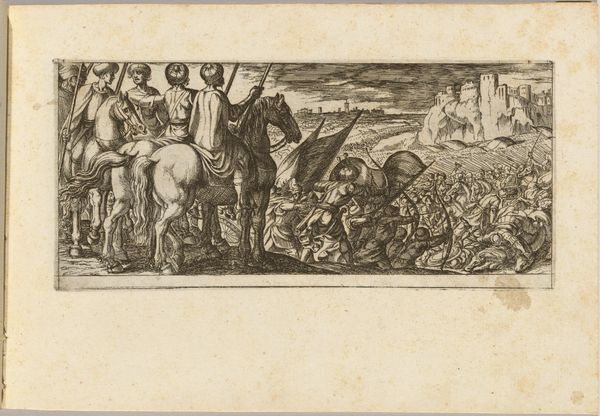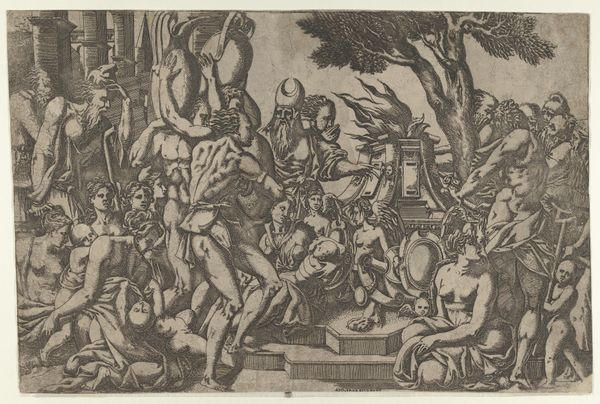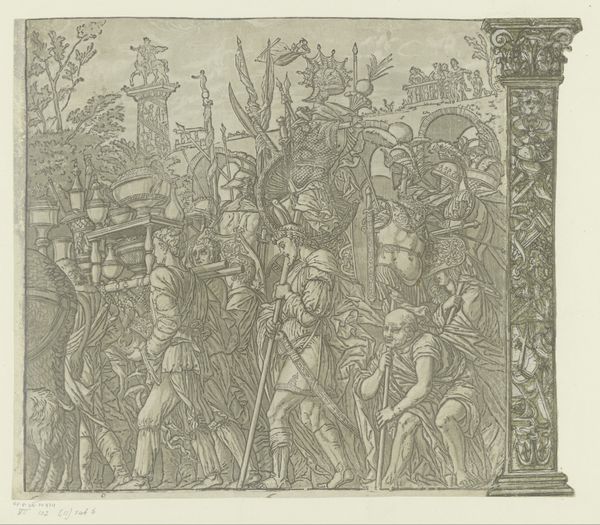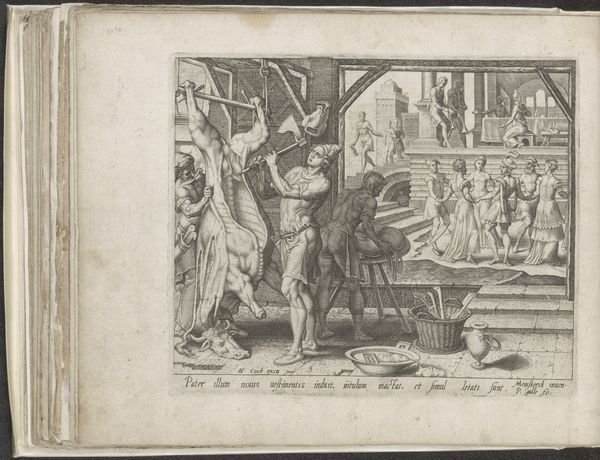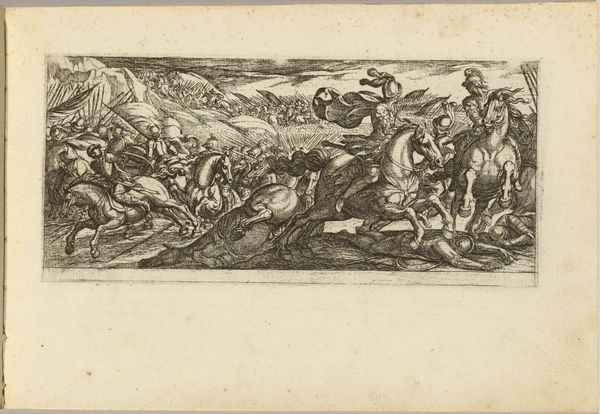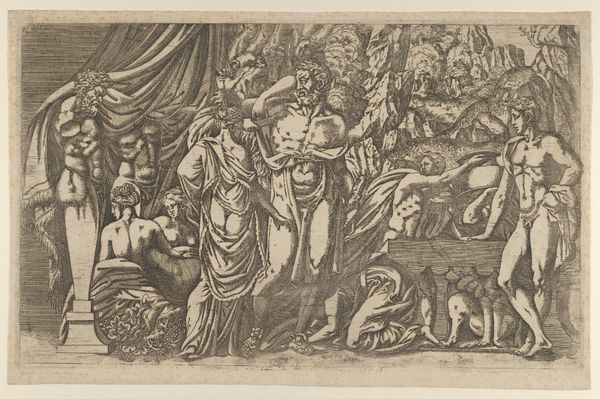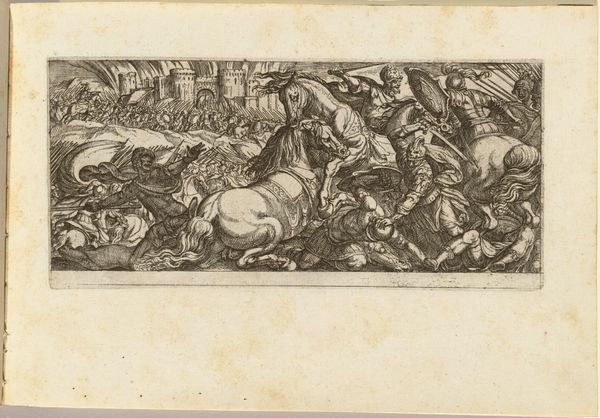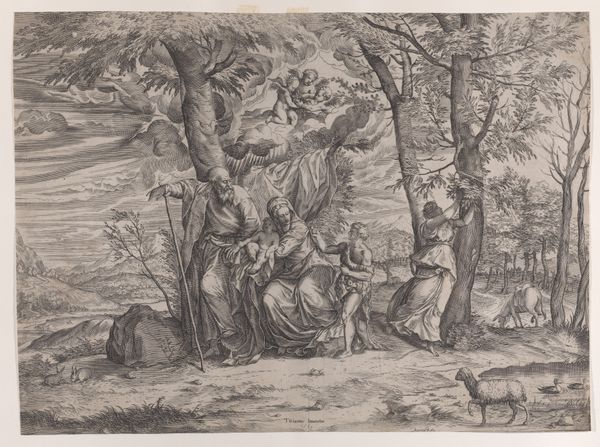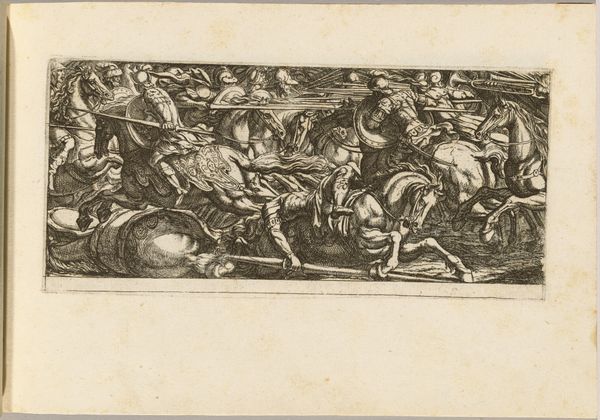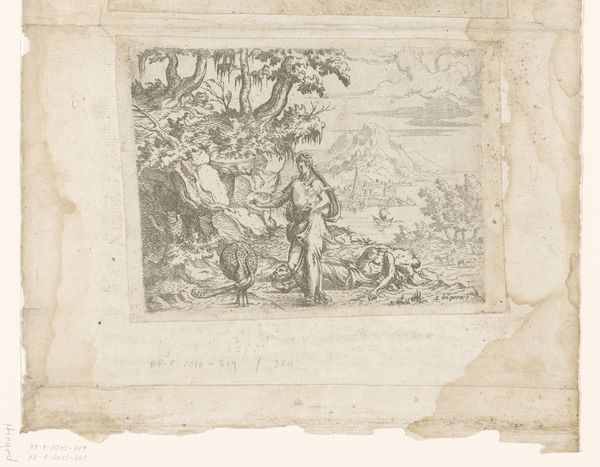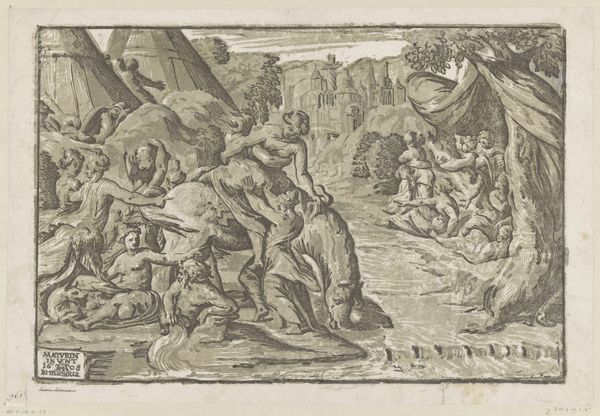
drawing, ink, pen
#
drawing
#
allegory
#
narrative-art
#
figuration
#
11_renaissance
#
ink
#
pen
#
history-painting
#
northern-renaissance
Dimensions: height 258 mm, width 714 mm
Copyright: Rijks Museum: Open Domain
Editor: Here we have a drawing, crafted sometime between 1550 and 1580, entitled *Allegory with a Motif of the Good Samaritan*. It’s pen and ink on paper and attributed to Martin Weigel. It’s intense. What really stands out is the dramatic contrast of violence on the left and…well, what seems like indifference on the right. What do you make of this scene? Curator: Oh, that’s an astute observation! For me, this drawing feels like stepping into a fever dream—a jumble of biblical imagery, moralizing allegory, and figures ripped from classical myth all battling it out on a single plane. Martin Weigel invites us into his imagination, one filtered through the lens of the Northern Renaissance. The brutality juxtaposed with the seemingly detached figures creates a palpable tension, doesn't it? Editor: Absolutely! I'm trying to figure out if the figures on the right, carrying what look like tablets or books, represent justice or…something else entirely? Are they passing judgement, or are they just as complicit as the violent figures? Curator: Precisely! Consider the context: the rise of humanism, the questioning of religious authority. Could Weigel be suggesting that law and religion, symbolized by those tablets, sometimes turn a blind eye to suffering? It's not just about the Samaritan's kindness, but about exposing a deeper societal hypocrisy, maybe. Look at how he renders the landscape. Stark, almost barren. Does that amplify the feeling, do you think? Editor: I do. It's a landscape of indifference. Knowing the history helps frame my perspective. I initially only saw violence and ignored the...complexity of those burdened figures on the right. Now, it really feels like it transcends being just a biblical scene and turns into something much more powerful and critical of the time. Curator: Wonderful! It is through these explorations that artwork truly reveals itself and teaches us how to look beyond the immediately visible. I think that makes this a profoundly insightful, perhaps even prescient piece, wouldn't you agree?
Comments
No comments
Be the first to comment and join the conversation on the ultimate creative platform.

